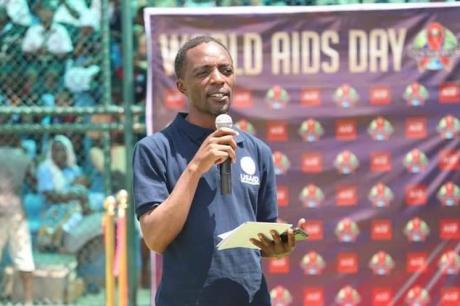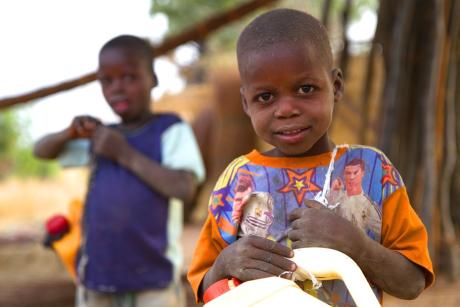“There is a gap between what youth are learning and the reality of the mixed messages they get from the community and the demands placed on them,” she says.
Muhuru Bay is in a remote part of Kenya on Lake Victoria where estimates are that 15.3% of the population is infected with HIV – compared to 7.8% in the country as a whole.
Puffer visited Muhuru Bay in September to begin her postdoctoral research on mental health and the impact it has on the well-being and physical health of young girls and boys in the region. She chose to work in Muhuru Bay because she could tap into the community relationships already established by the WISER (Women’s Institute for Secondary Education and Research) education program. Her co-mentors at Duke are Professor Sherryl Broverman, director of WISER, and Professor Kathleen Sikkema, who serves as the director of the Social and Behavioral Sciences core at the Duke Center for AIDS Research (CFAR).
Learning from the Community
During this first visit, Puffer concentrated on getting to know the community and their needs. Through group discussions with community leaders, teachers, and groups of 12-15 year old students, Puffer learned that HIV/AIDS and early pregnancy are a main concern in the community, and that determining how to reduce sexual risk-taking behaviors is a large part of that concern.
“Right now, you have youth who are receiving education about the ABCs [abstinence, be faithful, use condoms] but going out into a community where it is very difficult to change their behavior. Many of them are set up for failure,” she says.
Puffer heard common themes about why preventing HIV/AIDS is so difficult in Muhuru Bay.
“One problem is the practice of transactional sex,” Puffer says. “Community members were saying that girls as young as 10 were exchanging sex for money.”
Discussions with the youth confirmed that transactional sex, while not often talked about, is clearly well known. The issue is a combination of economic and cultural pressures: “Boys are able to fish [in nearby Lake Victoria], but girls are not allowed to fish,” says Puffer. “So the boys go fish for pocket money, and the girls exchange sex for fish, or a pair of shoes, or other things they or their families need.”
After we are finished fishing from that lake, we get some money. And then after we got those money, we come back and we spend with girls.” – primary school boy
A complicating factor is the general silence about HIV. “When people speak at funerals, they will not say that the person has died from AIDS. The children are not seeing in a clear way the effect that AIDS is having on the community,” says Puffer.
“Even when one has died of AIDS, they do not come openly to say surely it was AIDS, they beat about the bush saying it was chira [the curse].” – church member
Resignation about a dim future also increases risky behavior. “Many of these young teens have lost parents. They aren’t sure they can get a job. They aren’t sure they can continue to go to school,” says Puffer. “It was so eye-opening for me that while these youth have big dreams, they are constantly worried about how their basic needs are going to be met.” In such an atmosphere, surviving today becomes more important than planning for an unknowable future.
Changing the Future
“One goal of the boarding school for girls that WISER is building in this area is to improve the girls’ hope for the future so they can see that while avoiding transactional sex might mean making significant sacrifices now, it could be worth it for a better future,” says Puffer.
“The challenge is that changing social patterns is a really hard thing to do. It requires community participation from the beginning.”
Her next step is to plan surveys to gather information from individuals in the community so she can better understand how risk factors play out in the lives of individuals, and document the true scope of the risk factors that the community has identified. Once the factors that lead youth in Muhuru Bay to engage in risky behaviors are more clearly quantified and articulated, the goal is to develop a program to address the most important of these risk factors.
“Between now and when I return next summer, I will be working at a distance with the community to translate the surveys into Dholou, the local language and to get their input on what sort of questions they would like me to ask, and what issues they think they are ready to tackle,” says Puffer.
“Ultimately, we want to create a pilot program of interventions that includes the entire community – youth, parents, fishermen, community leaders, teachers, and pastors. In developing this intervention, I see my role as providing research and mental health consultation. They bring expertise about their culture and the strengths in their community we can build on. Together, we hope to make changes in the community at the structural level so that the youth have the social and cultural support they need to make healthy behavior choices.”


